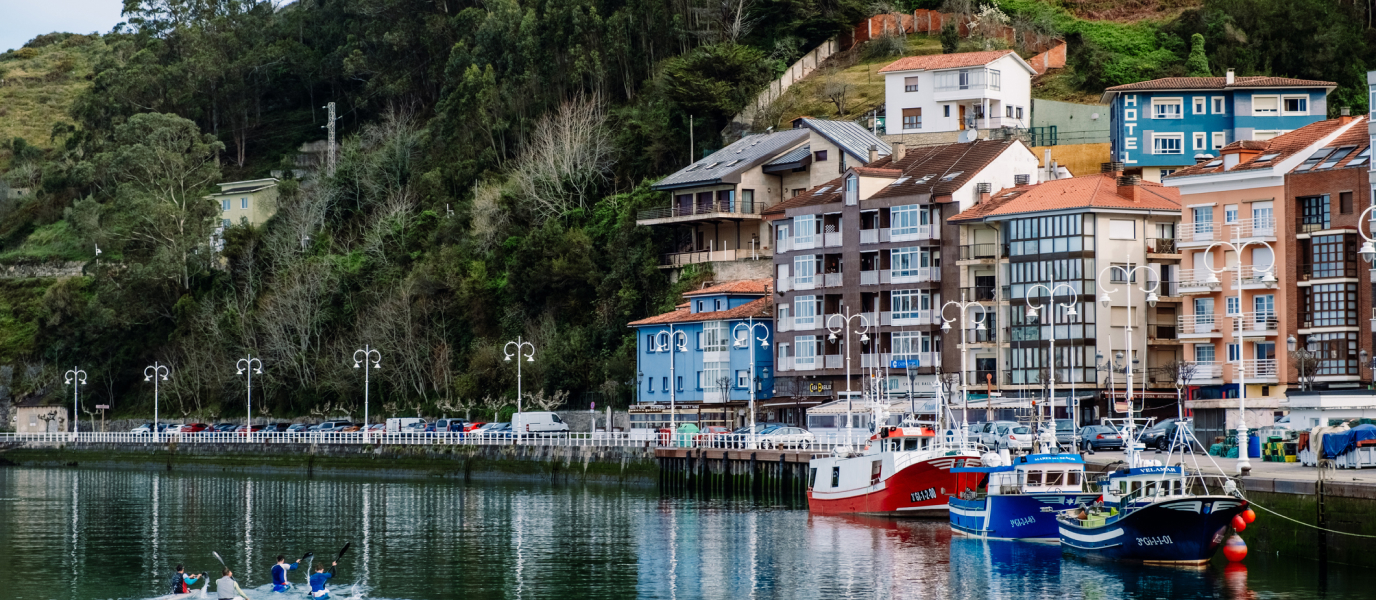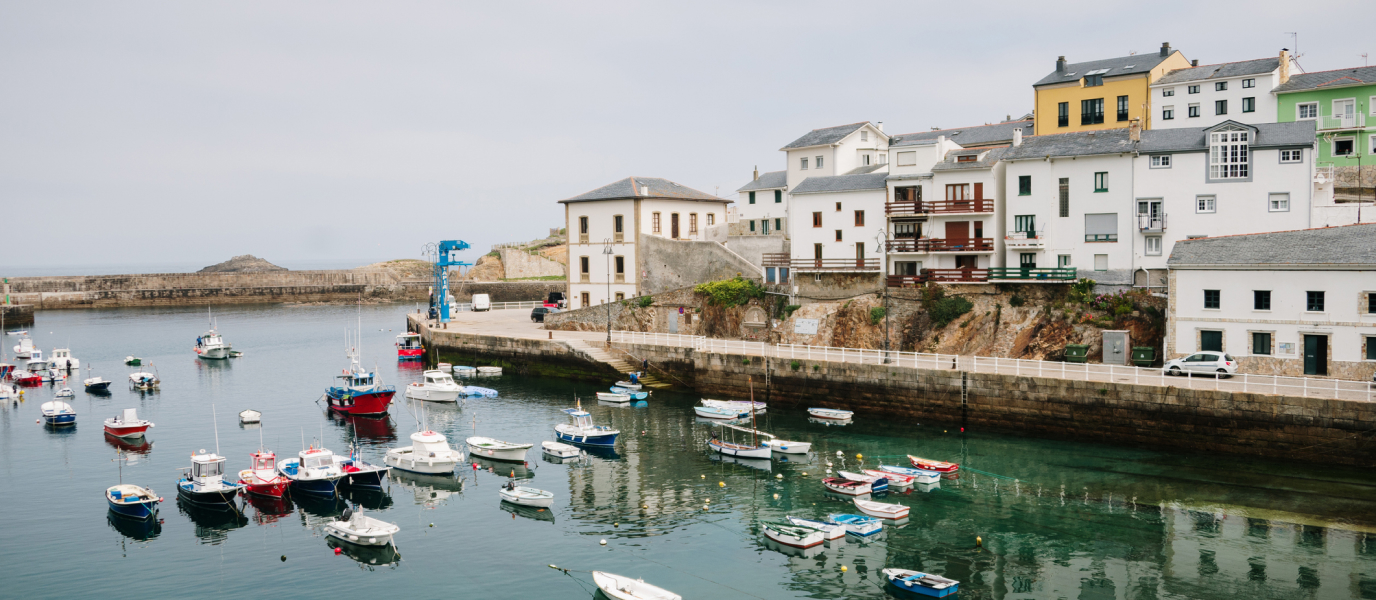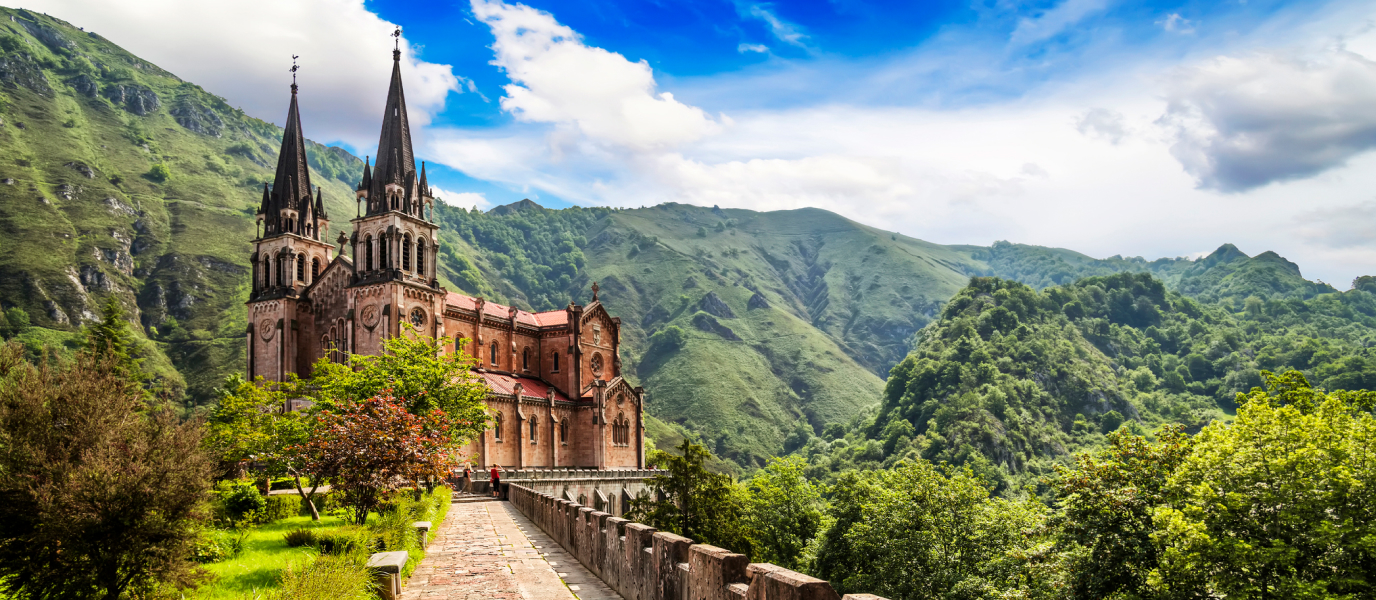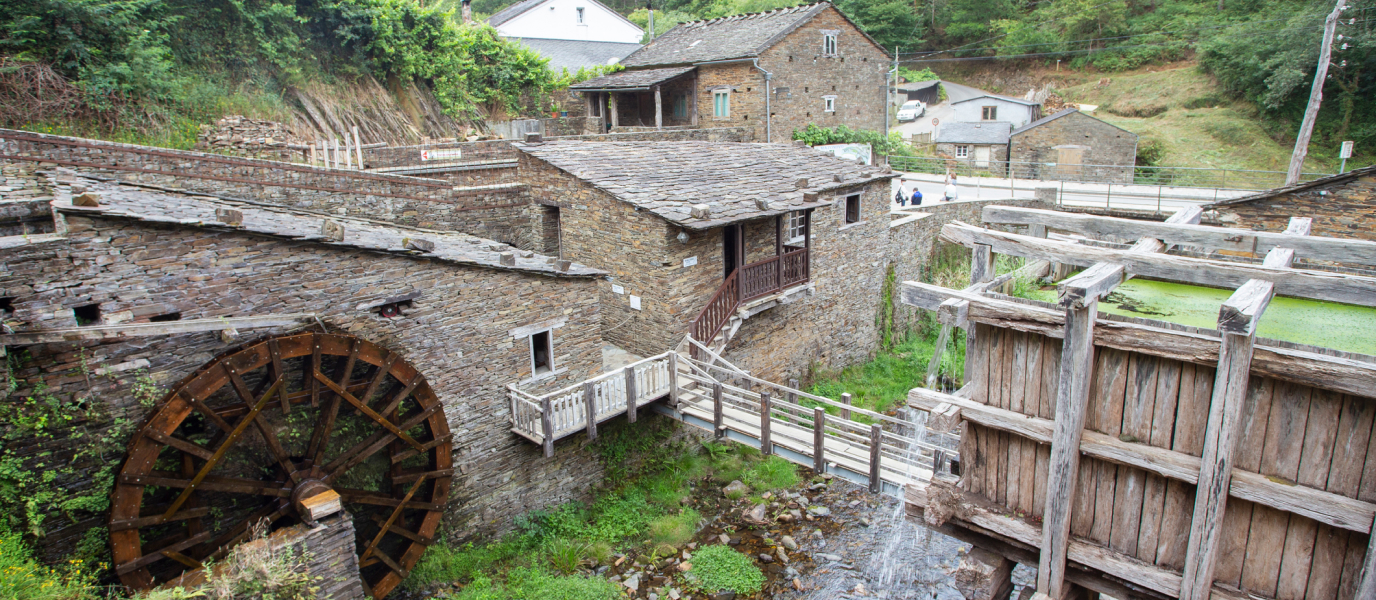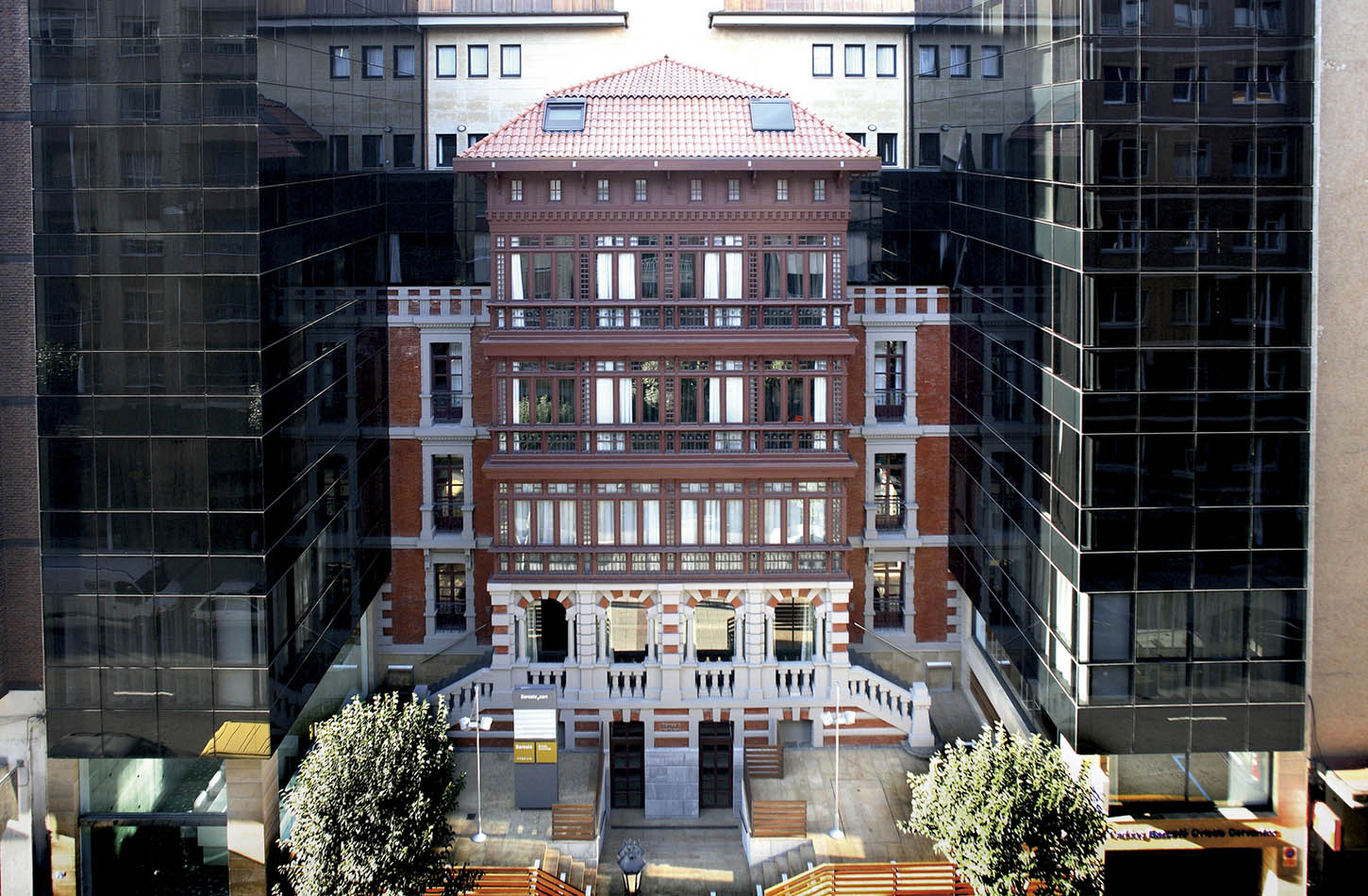Overlooking the Cantabrian Sea, the coastal town of Ribadesella offers a wide range of sporting, cultural and recreational activities. Canoe down the Sella River; discover Palaeolithic cave art; or stroll through the cobble-stoned streets of this cosy little town, part of the pilgrimage route to Santiago.
Not convinced yet? Did we mention you can explore picturesque beaches? Discover dinosaur footprint fossils? And experience the best traditional Asturian cuisine? Ribadesella offers plenty of reasons to make it your next destination. Read on to learn about what to see and do during your stay.
The International Descent of the Sella River
Dionisio de la Huerta, the founder of the International Descent of the Sella River, and a group of friends attempted to canoe down the Sella River from Arriondas for the first time in 1929. It wasn’t until 1931 that they were able to successfully complete the 17-km descent to Ribadesella, establishing the official itinerary of the Descent of the Sella River.
The race has taken place every year since then, only interrupted once during the Spanish Civil War. The Royal Canoeing Federation of Spain has been organising this event for the last 83 years, convening more than one thousand Spanish and foreign canoeists every year.
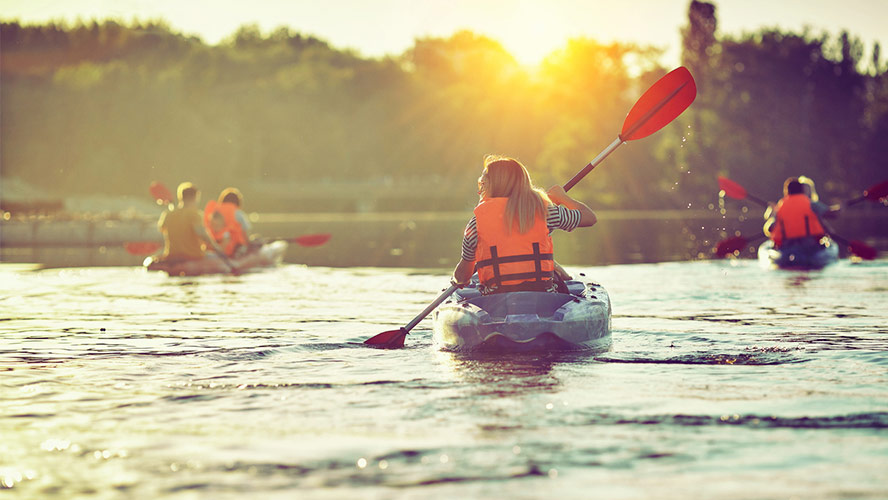
You don’t need to take part in the competition to take part in this event. If you are in Asturias during the first week of August, drop by the town and enjoy the festivities taking place around the descent, such as the Canoe Party. You’ll have an absolute blast as you watch the train of dressed-up people and extravagantly decorated vehicles cheer on the participants from the start to the finish of the descent. Once the descent is completed, everyone gathers at Campos de Ova to celebrate the winners with cider and typical Asturian delicacies, such as bollo preñao. Then, dance the night away under the stars. It’s no surprise that the Descent of the Sella River was declared a Festival of International Tourist Interest in 1951.
What to see and do in Ribadesella
Tito Bustillo Cave
Originally known as El Pozu’l Ramu, the Tito Bustillo Cave is a prehistoric cave located in the Massif of Ardines that was renamed after one of its discoverers. It constitutes just one of the many reasons to spend a few days in Ribadesella.
In 1968, a speleology team discovered what would become one of the most important Palaeolithic art sites in the world and a designated UNESCO World Heritage Site in 2008. The cave paintings and engravings were made been between 33,000 BC and 10,000 BC, using a wide variety of techniques and styles to depict animals, humans and signs. The cave is made up of 12 chambers but only the one featuring the Main Panel is open to the public – it is the most important chamber, housing the largest number of representations.
Visit the Cave Art Museum (Centro de Arte Rupestre) to learn more about how the cave was discovered, how it was formed, who lived in it, when they lived in it and what kind of cave art it contains.
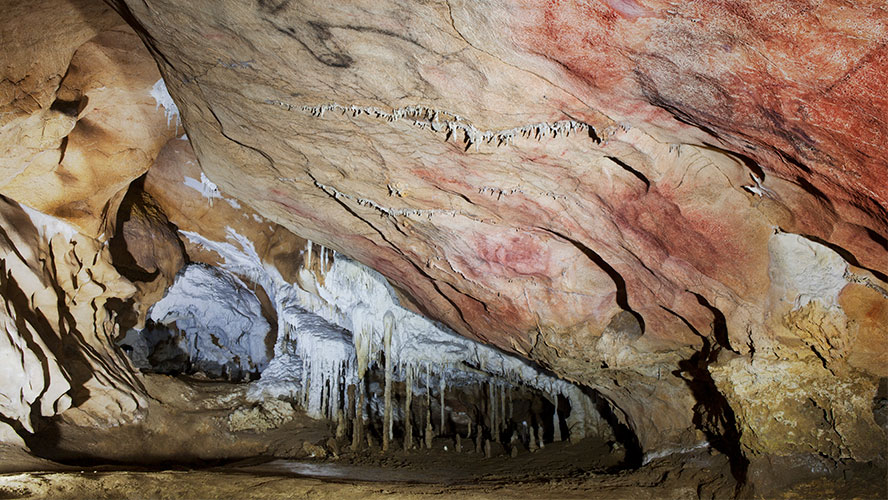
The beaches of Ribadesella
The beaches of Ribadesella are ideal for some well-deserved relaxation – as long as Asturian summer weather cooperates! Sunbathe or go for a refreshing dip in the Cantabrian Sea as you fall into holiday mode.
Santa Marina Beach
Located on the western side of the Sella River estuary, the sandy town offers an idyllic setting for a day at the beach. The rugged peaks of Mount Somos and Coberu stand tall in the backdrop and a row of stately 19th-century mansions line the seafront promenade. These gorgeous homes were built by returning emigrants who had prospered in the Americas and were inspired by its architecture.
The 1.5-km stretch is a favourite among locals for leisurely strolls when the skies are clear. If you walk to the very end of the western side of the beach, you’ll see sauropod dinosaur footprints embedded in the cliff rock.
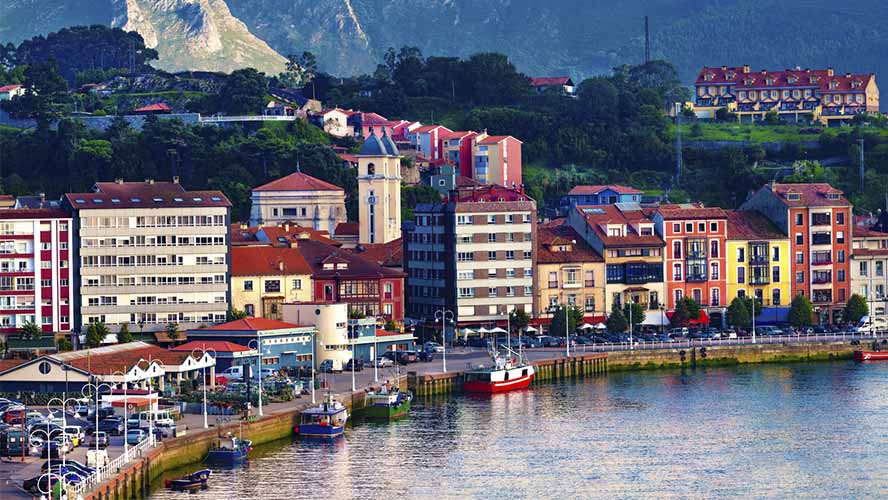
La Atalaya Beach
Easily accessed via Santa Marina Beach, this 1-km long cove is nestled at the foot Mount La Atalaya (also known as Corberu). Lesser-known and with fewer amenities than its sister beach, it is the perfect spot to come and unwind as you watch the tide ebb and flow.
Where to eat and drink in Ribadesella
Wherever you go in Asturias, you will be spoilt by the delicious cuisine and delicious cider. Read on to learn about what to eat and where to eat it – these Ribadesella restaurants and cider bars guarantee nothing but a delectable experience!
Restaurant and cider bars in the old town
Fully immerse yourself in the local way of living with a visit to the Romanesque-style old town. During the summertime, you’ll be amazed by the amount of people taking over the streets and squares, enjoying a glass of refreshing cider
Restaurant-Cider Bar La Guía offers a varied menu with traditional dishes, ranging from fabada to fresh fish from the harbour market, and accompanied with tart splashes of cider.
The tiny restaurant of Talamera Gastro is located right in the town centre and serves platters of Asturian cheeses, such as the strong, flavourful Cabrales cheese. If you are looking to eat an authentic cachopo, a staple of Asturian cuisine, head to Mesón de Ana.
Harbour restaurants and cider bars
Ribadesella harbour is the ideal place to taste some of the freshest food the sea has to offer. The harbour market, La Rula de Ribadesella, is located on the quayside and supplies the restaurants only with freshest catches of the day. Take a walk along Paseo de la Grúa to see the ceramic murals the Spanish cartoonist Antonio Mingote created, depicting local history. They are another must-see for your visit.
Why not explore the local cider bar scene? El Puerto, El Tarteru and Carroceru bustle with patrons enjoying the regional drink. And, La Marina and Arbidel won’t disappoint with their selection of fish, seafood and traditional Asturian cuisine. Wherever you go, you’ll fall under the spell of Ribadesella’s contagious joie-de-vivre.




































































